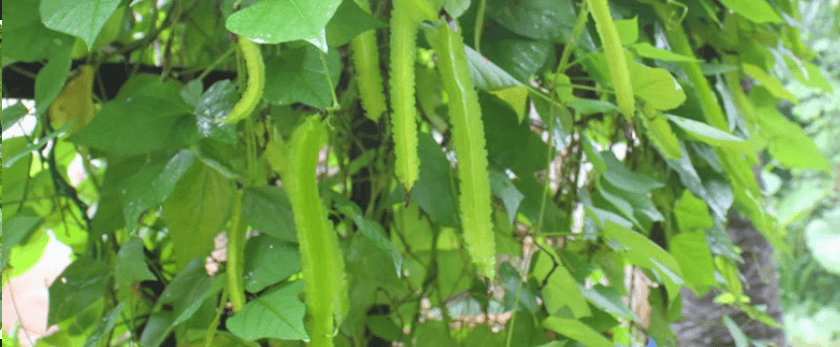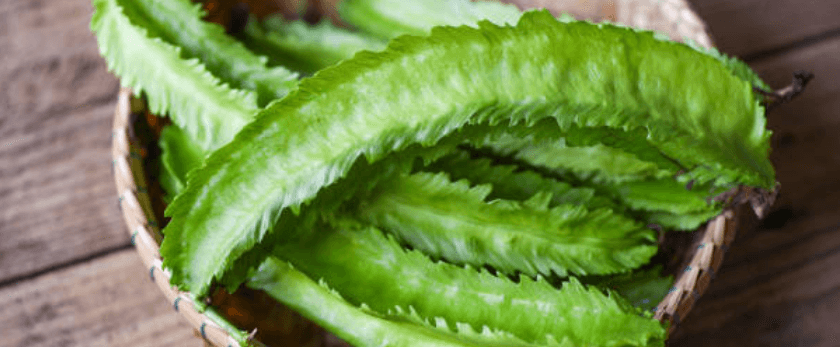Are you looking for a versatile and nutritious addition to your garden? Look no further than the winged bean! This tropical legume is not only easy to grow, but it also has a variety of uses in the kitchen. Plus, it's a sustainable choice for your garden, as it requires minimal resources and can even improve soil health. In this article, we'll guide you through the process of growing winged beans and provide tips for caring for them along the way.
What is a Winged Bean?
Before we dive into the growing process, let's first understand what a winged bean is. Also known as the Goa bean, four-angled bean, or asparagus pea, the winged bean (Psophocarpus tetragonolobus) is a tropical legume native to Southeast Asia. It is a climbing vine that can reach up to 10 feet in height and produces pods that resemble wings, hence its name.
The winged bean is a highly nutritious plant, with all parts of the plant being edible. The leaves, flowers, and tubers are commonly used in traditional dishes in Southeast Asia, and the beans themselves are a good source of protein, fiber, and essential vitamins and minerals.
How to Care for Winged Bean
Now that we know a bit about the winged bean, let's get into the details of how to care for it. Here are some key points to keep in mind when growing winged beans:
Watering
Winged beans require consistent moisture, but they don't like to be waterlogged. It's best to water them deeply once or twice a week, depending on the weather and soil conditions. Make sure the soil is well-draining to prevent water from pooling around the roots.
Light
Winged beans thrive in full sun, but they can also tolerate partial shade. If you live in a hot climate, providing some afternoon shade can help prevent the plants from wilting. If you're growing winged beans indoors, make sure they receive at least 6-8 hours of sunlight per day.
Soil
Winged beans prefer well-draining, loamy soil with a pH between 6.0-7.0. If your soil is too acidic, you can add some lime to raise the pH. If it's too alkaline, you can add some sulfur to lower the pH. It's also a good idea to add some organic matter, such as compost or aged manure, to the soil before planting to provide nutrients and improve soil structure.
Fertilizer
Winged beans are light feeders and don't require much fertilizer. However, if your soil is poor, you can add a balanced fertilizer (such as 10-10-10) at planting time. Avoid using high-nitrogen fertilizers, as they can promote leaf growth at the expense of flower and bean production.
Pruning
Pruning is not necessary for winged beans, but it can help promote bushier growth and prevent the vines from becoming too tangled. You can pinch off the tips of the vines once they reach the desired height, or you can trim back any damaged or dead branches.

What is the Best Time to Grow Winged Bean?
Winged beans are a warm-season crop and require a long growing season to produce a good harvest. They can be grown year-round in tropical regions, but in temperate climates, they are best planted in the spring after the last frost. In cooler regions, you can start the seeds indoors a few weeks before the last frost and transplant them outside once the weather warms up.
Common Problems with Winged Bean
Like any plant, winged beans can face some challenges during their growth. Here are some common problems you may encounter and how to address them:
Pests
Winged beans are relatively pest-resistant, but they can be susceptible to aphids, mites, and caterpillars. You can handpick these pests or use an organic insecticidal soap to control them. Avoid using chemical pesticides, as they can harm beneficial insects and pollinators.
Diseases
Winged beans can be affected by fungal diseases such as powdery mildew and rust. To prevent these diseases, make sure the plants have good air circulation and avoid overhead watering. If you notice any signs of disease, remove the affected parts of the plant and dispose of them properly.
Nutrient Deficiencies
If your winged beans are not growing well or are showing signs of yellowing leaves, they may be lacking in nutrients. A soil test can help determine which nutrients are deficient, and you can amend the soil accordingly. Adding a balanced fertilizer can also help provide essential nutrients.
Sustainable Disposal Methods for Winged Bean
As mentioned earlier, winged beans are a sustainable choice for your garden. Not only do they require minimal resources to grow, but they can also improve soil health. But what about when the growing season is over? Here are some sustainable disposal methods for winged beans:
Composting
Winged beans are a great addition to your compost pile. Their leaves, stems, and pods are rich in nitrogen, which can help speed up the composting process. Just make sure to chop them into smaller pieces before adding them to the pile.
Mulching
You can also use the leaves and stems of winged beans as mulch in your garden. This can help suppress weeds, retain moisture, and add nutrients to the soil as they break down.
Seed Saving
If you want to grow winged beans again next season, you can save the seeds from your current harvest. Simply let the pods dry on the vine, then remove the seeds and store them in a cool, dry place until you're ready to plant them.
Conclusion
Growing winged beans is not only a fun and rewarding experience, but it's also a sustainable choice for your garden. By following the care tips outlined in this article, you can enjoy a bountiful harvest of this versatile and nutritious plant. Remember to also consider sustainable disposal methods for your winged beans to complete the cycle of sustainability. Happy gardening!










